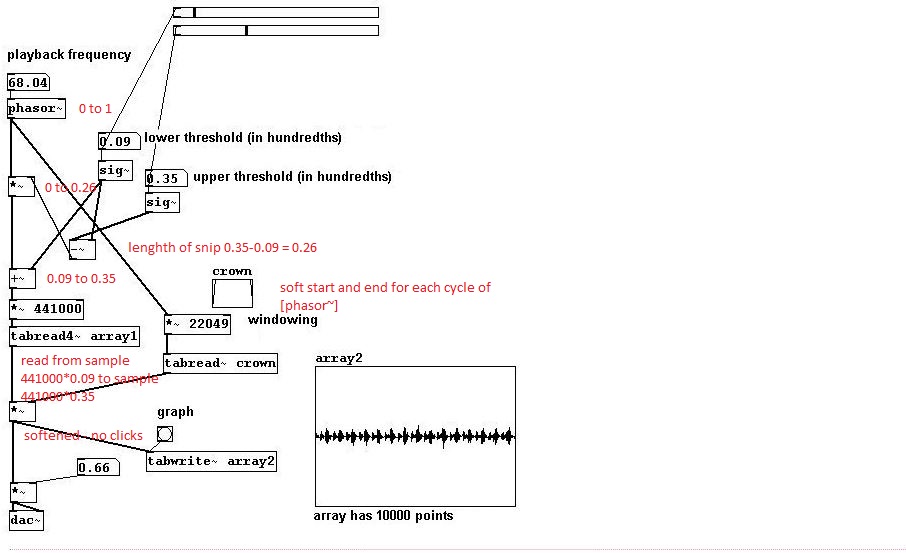I was hoping that someone can help explain a piece of code in the patch 3-5-1-4 wavestealing.pd. from the Johannes Kreidler tutorial. I am trying to work out what the code with the sig~ object to create the lower and upper thresholds in hundredths is actually doing but I can't work it out! The help file for sig~ object is not helpful to me and I can't describe what it's actually doing - is it slowing the audio playback down? How do they work in tandem (the upper and lower threshold). I'd appreciate any help with this code!
cheers, redstevo
-
help with a Johannes Kreidler patch using sig~ object
-
@redstevo [sig~] converts a control rate value to an audio rate signal.......
and is necessary because the rest of the patch is entirely audio rate [~] objects.
The [phasor~] outputs a ramp 0 to 1 .... 68.04 times a second.
The array being played is 10 seconds long at a samplerate of 44100.
The patch does this each time the [phasor~] outputs its ramp.......

You have a 2.6 second clip (at its original recorded samplerate) being played 68.04 times a second without clicks as it jumps back to its start.
Sending a different value into phasor will change the play speed.
David. -
Hi David, many thanks for your time with this! So instead of a 10 second clip being played 68 times a second there is a 2.6 second clip being played 68 times a second - making a shorter time span 'stretch' over the same phasor rate - thus sounding slower and lower?
Best,
redstevo -
@redstevo As I understand it (a stealing patch) it is taking (stealing) a small sample from the longer sample (setting the start and end points with the horizontal sliders) and repeat playing it at the rate set by [phasor~].
So it is like a digital version of the "Mellotron" https://en.wikipedia.org/wiki/Mellotron except that there is only one "tape" and it can be played at different speeds set by the input of [phasor~] which could be controlled by a midi input.
Just like a Mellotron it would need tuning for the sample though, but only once.
David.

